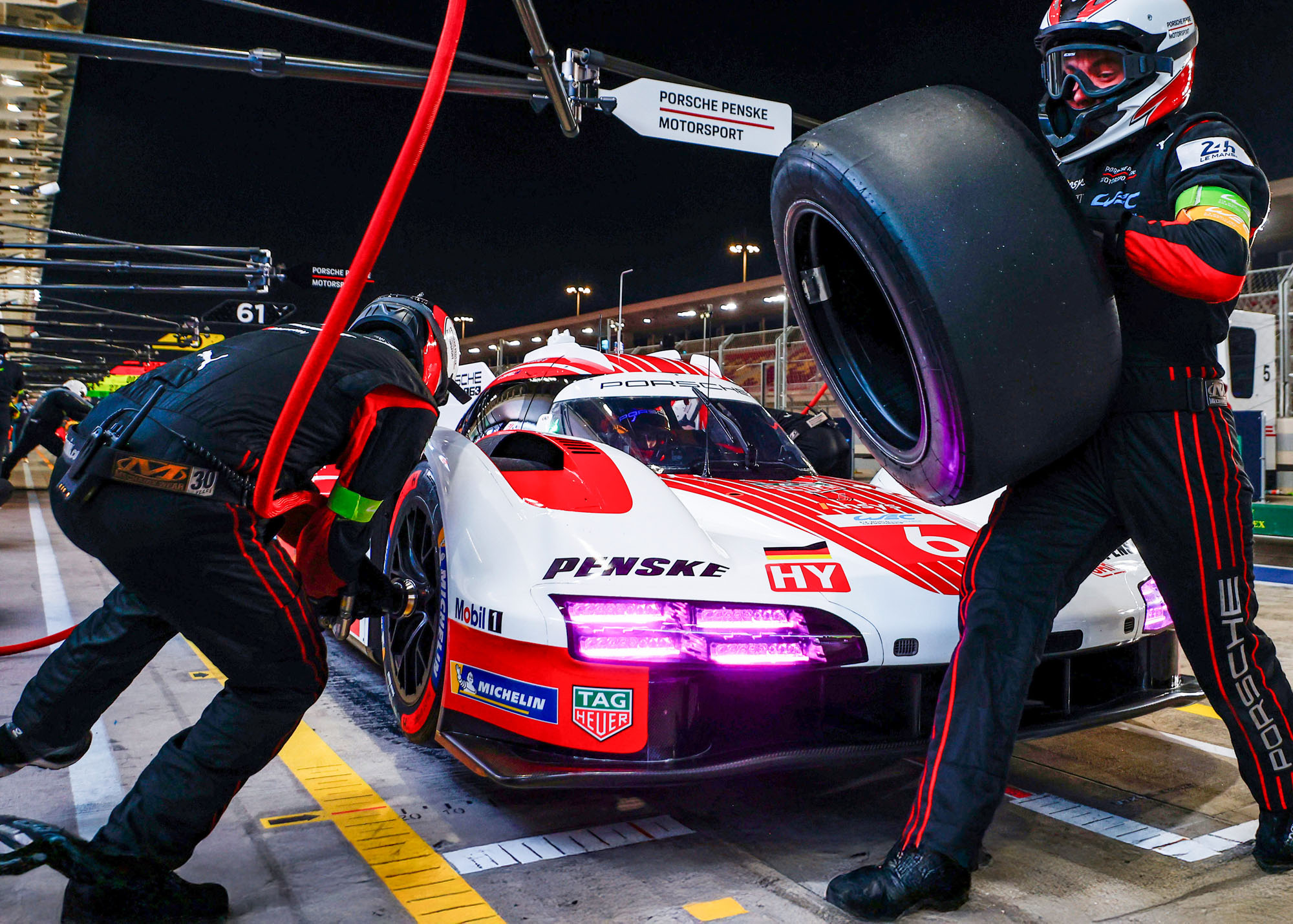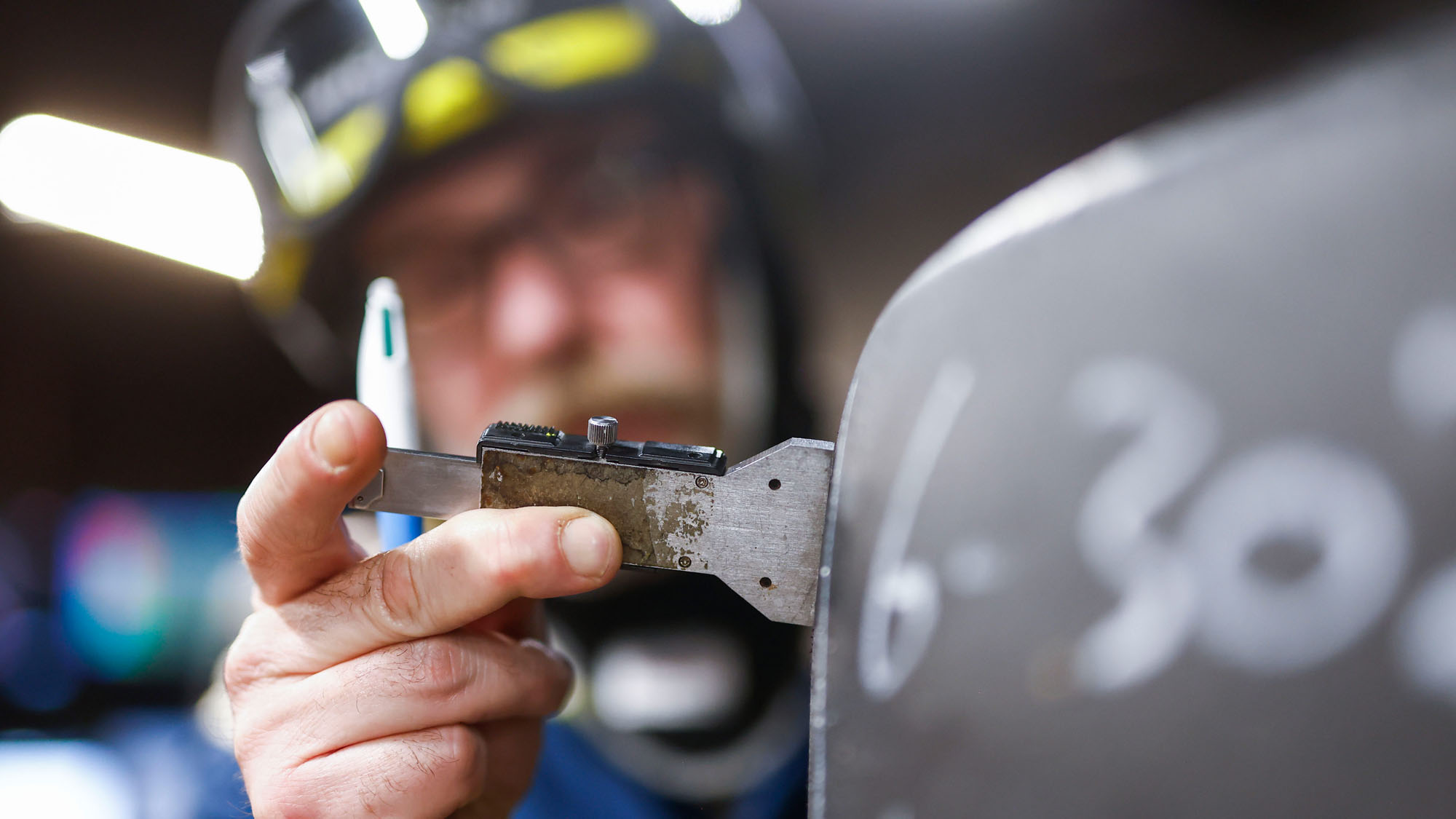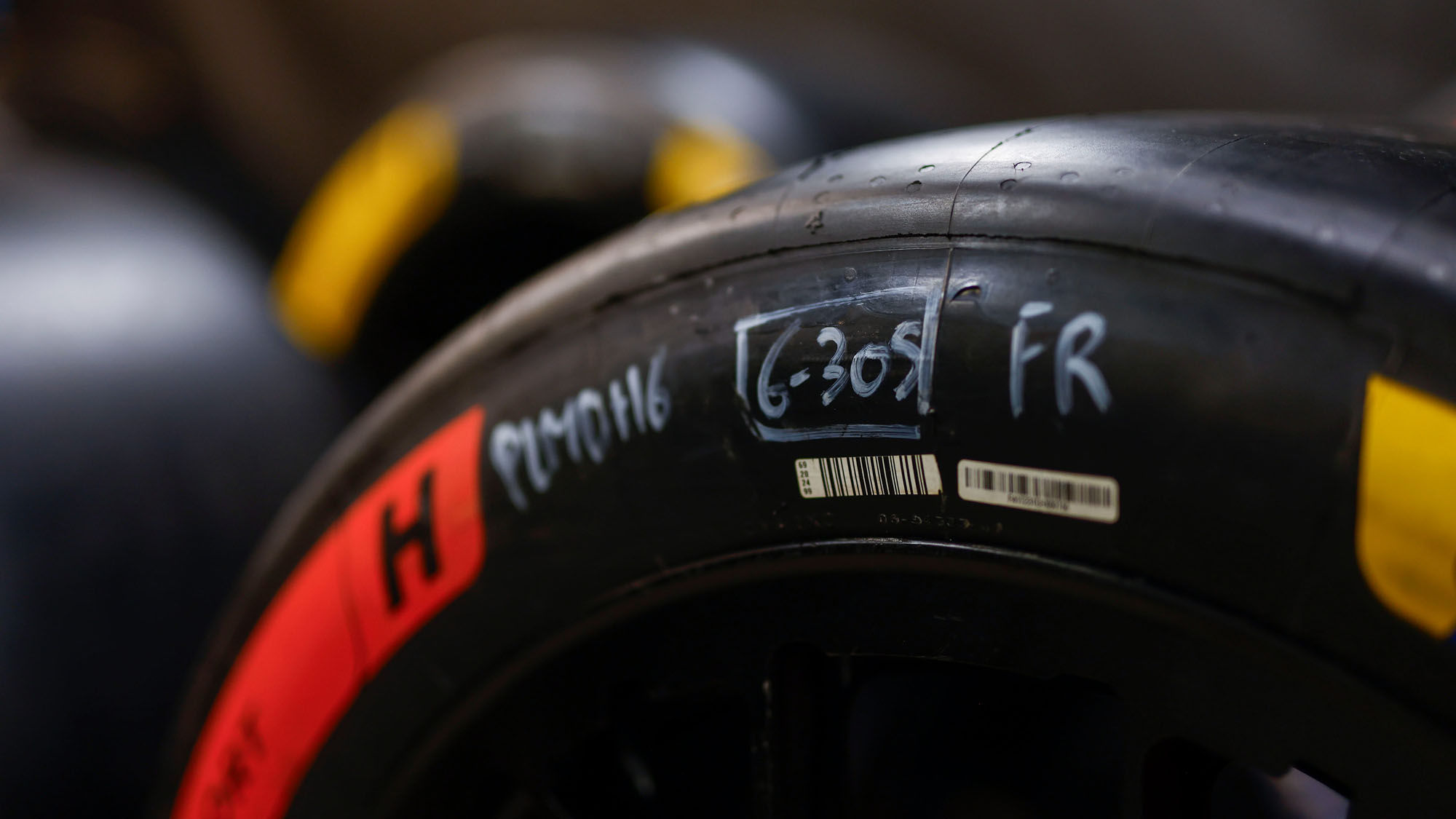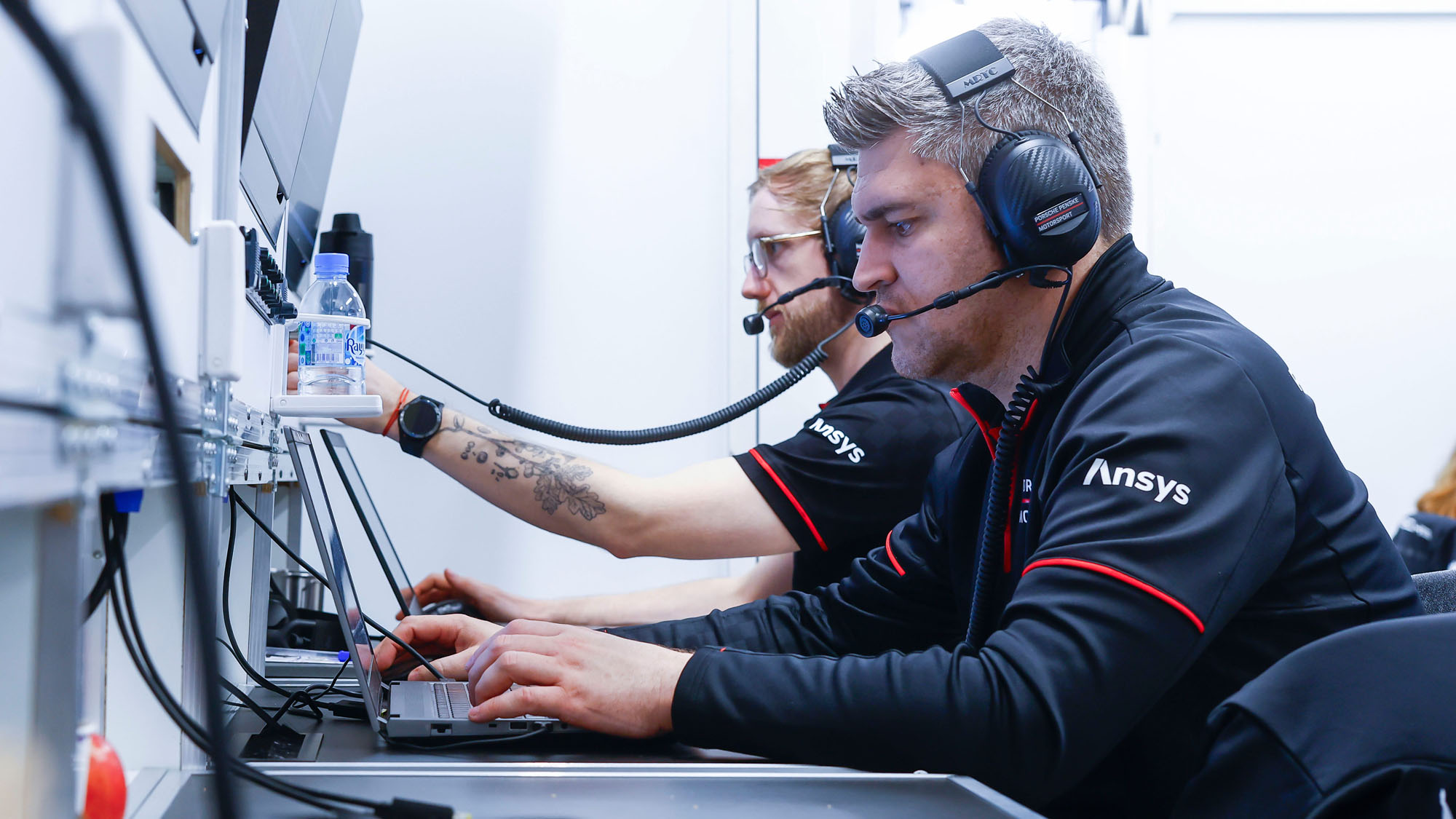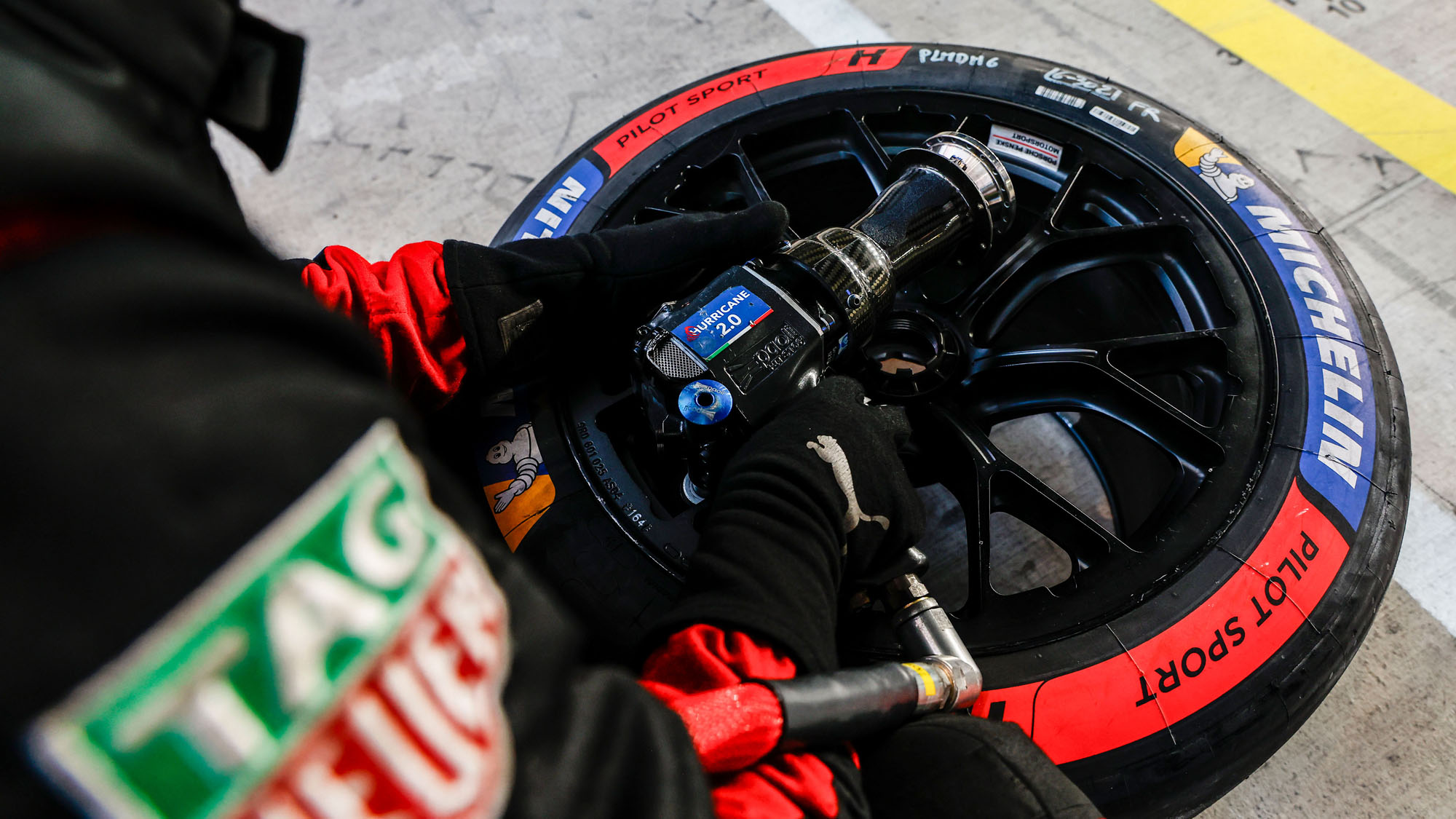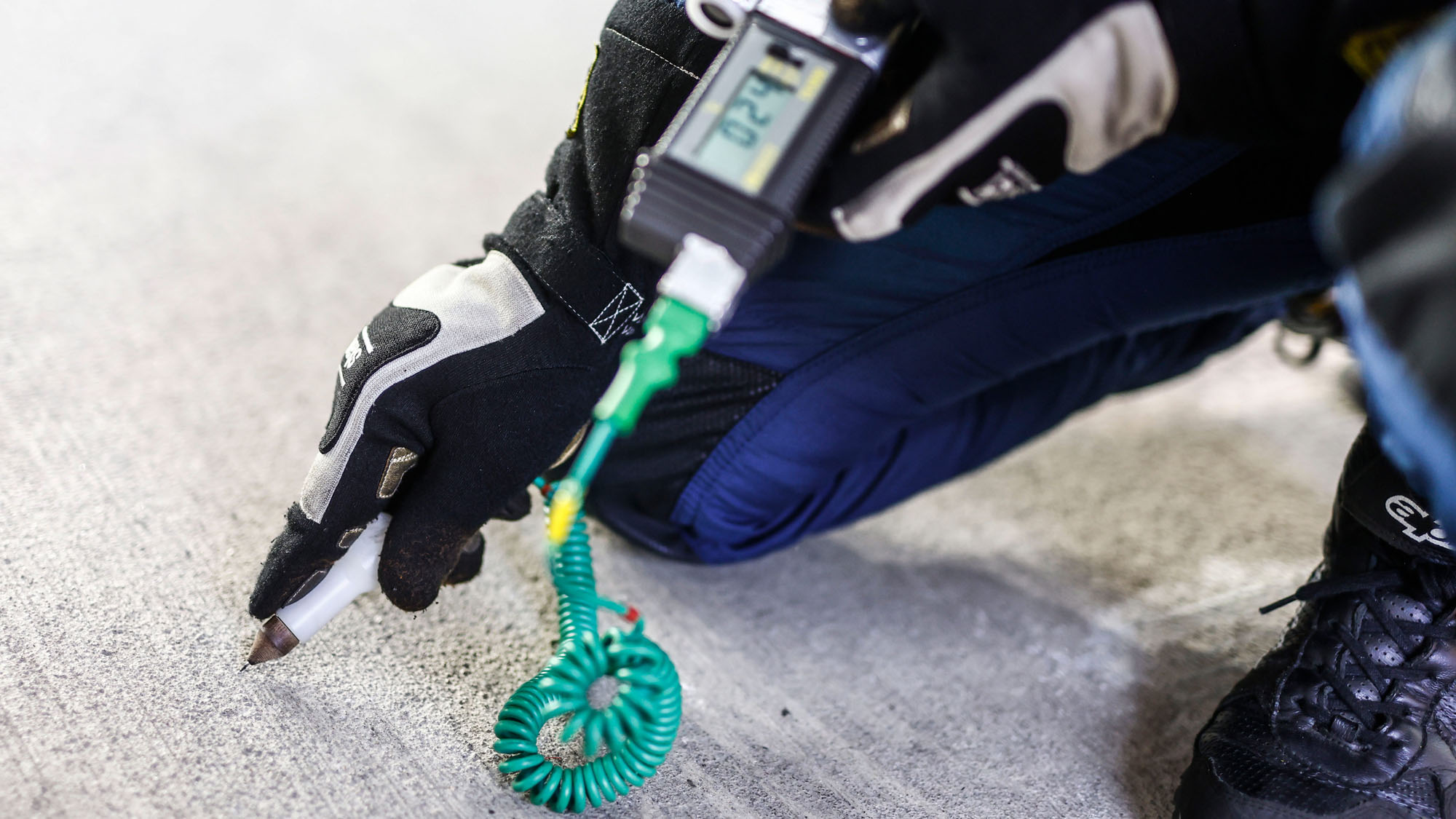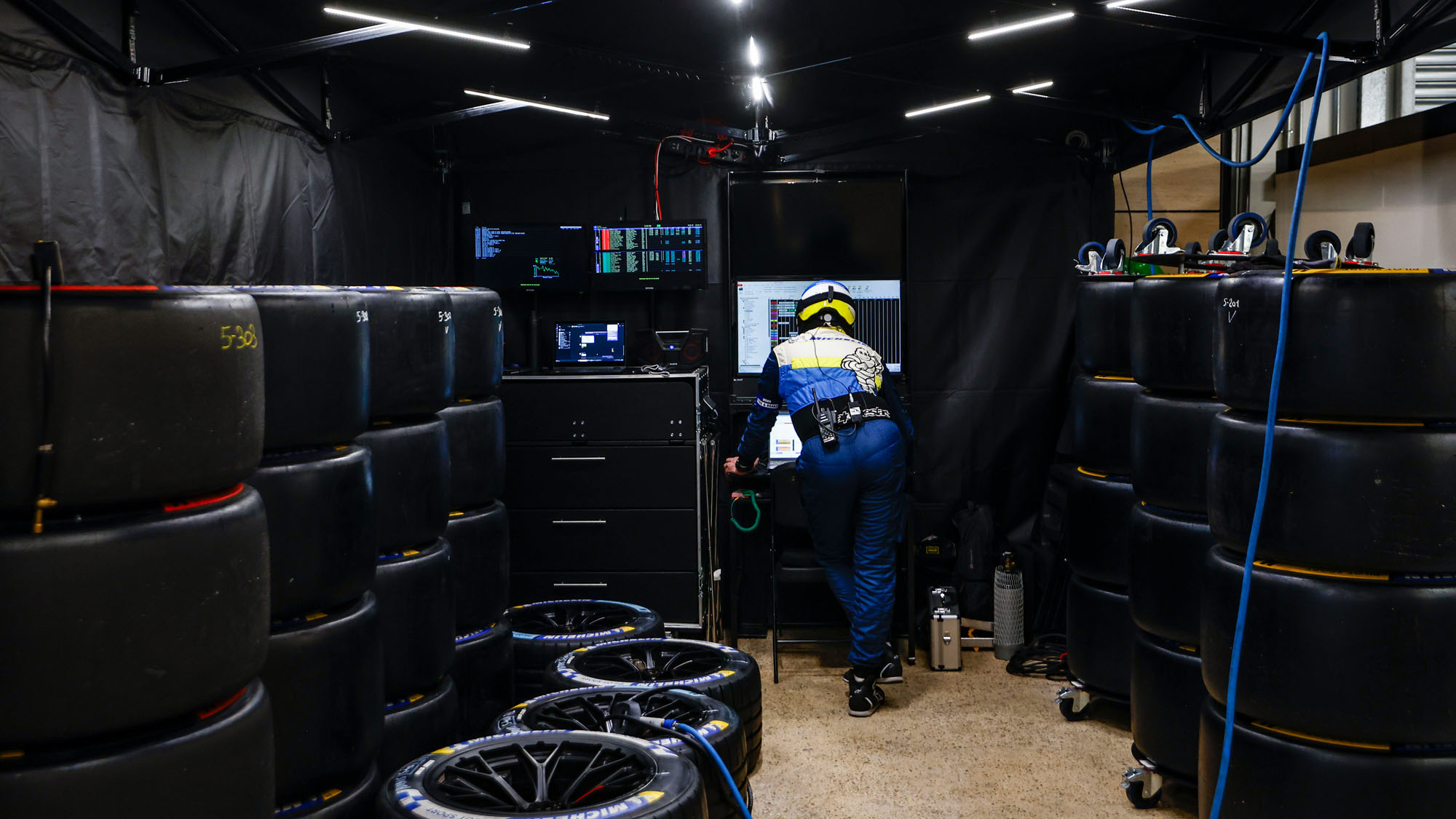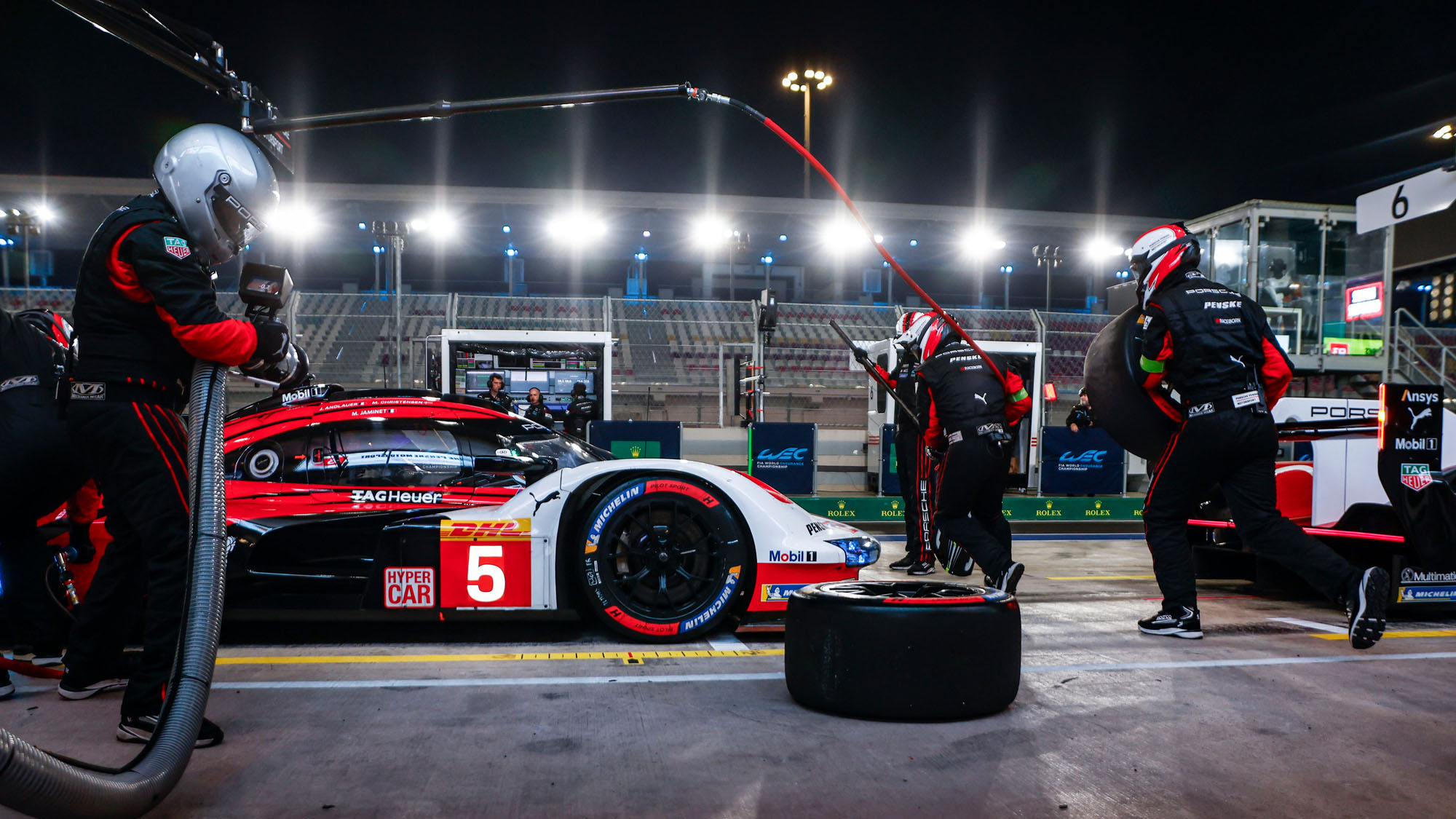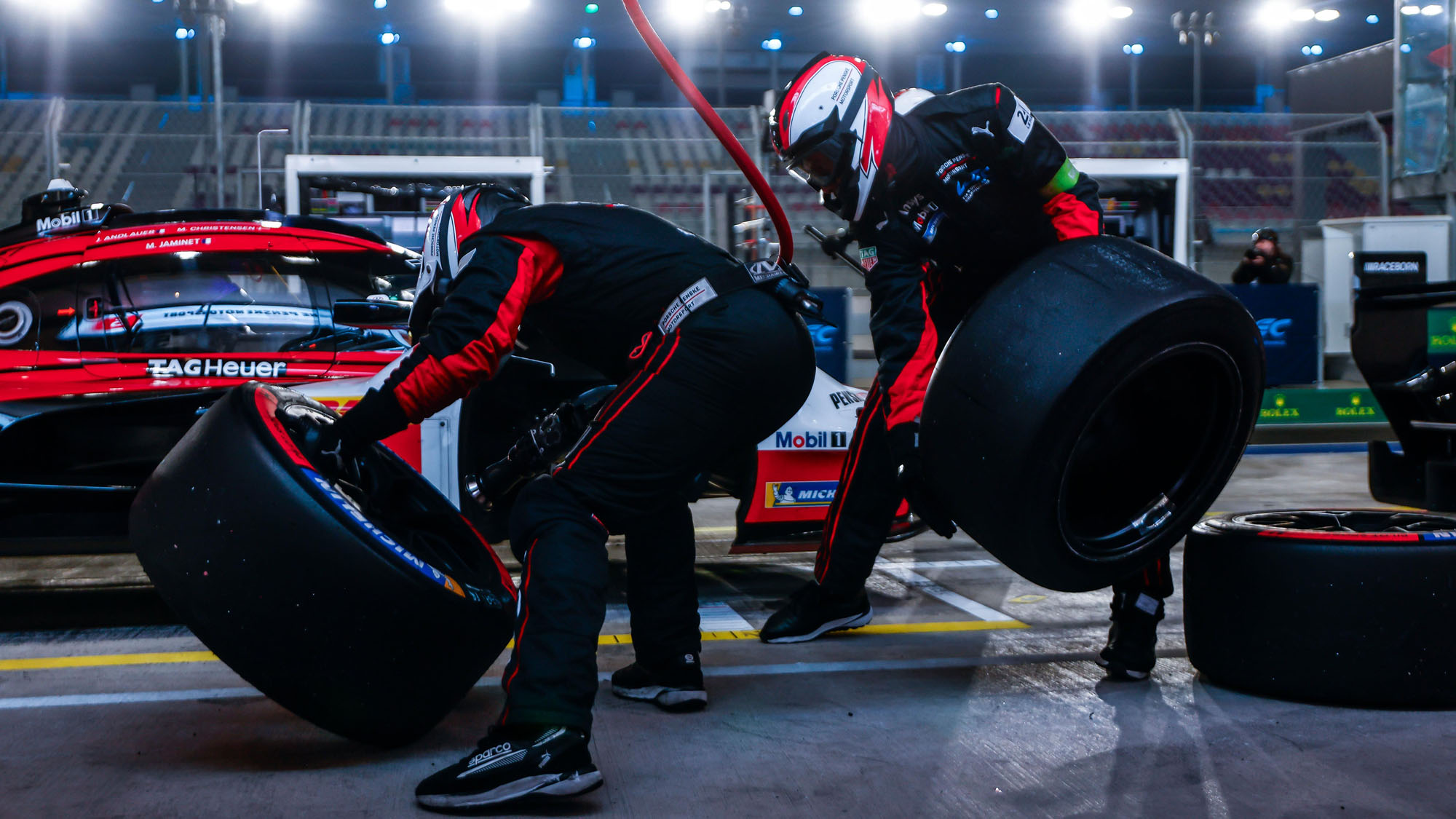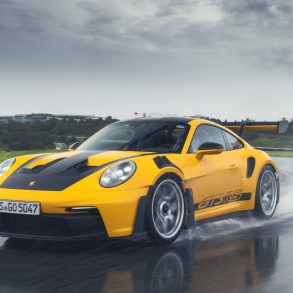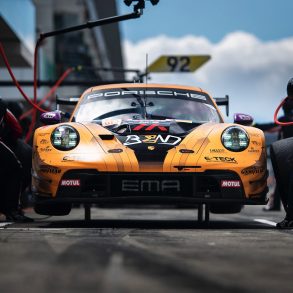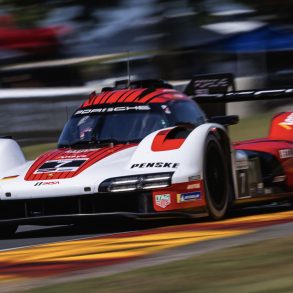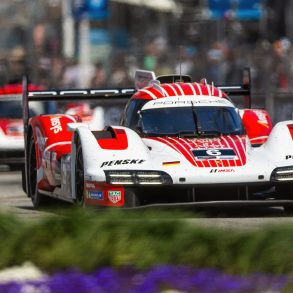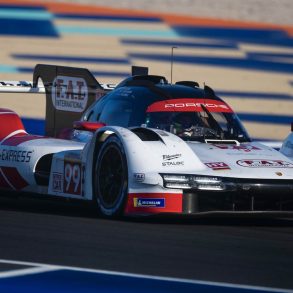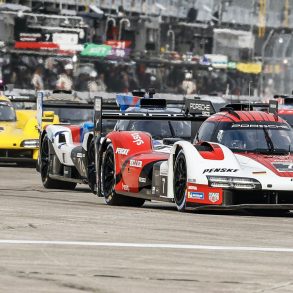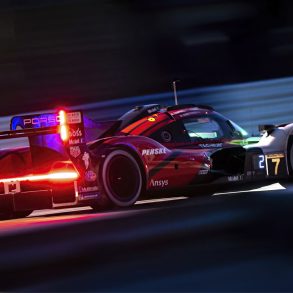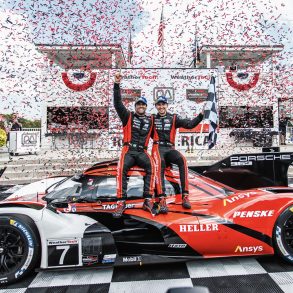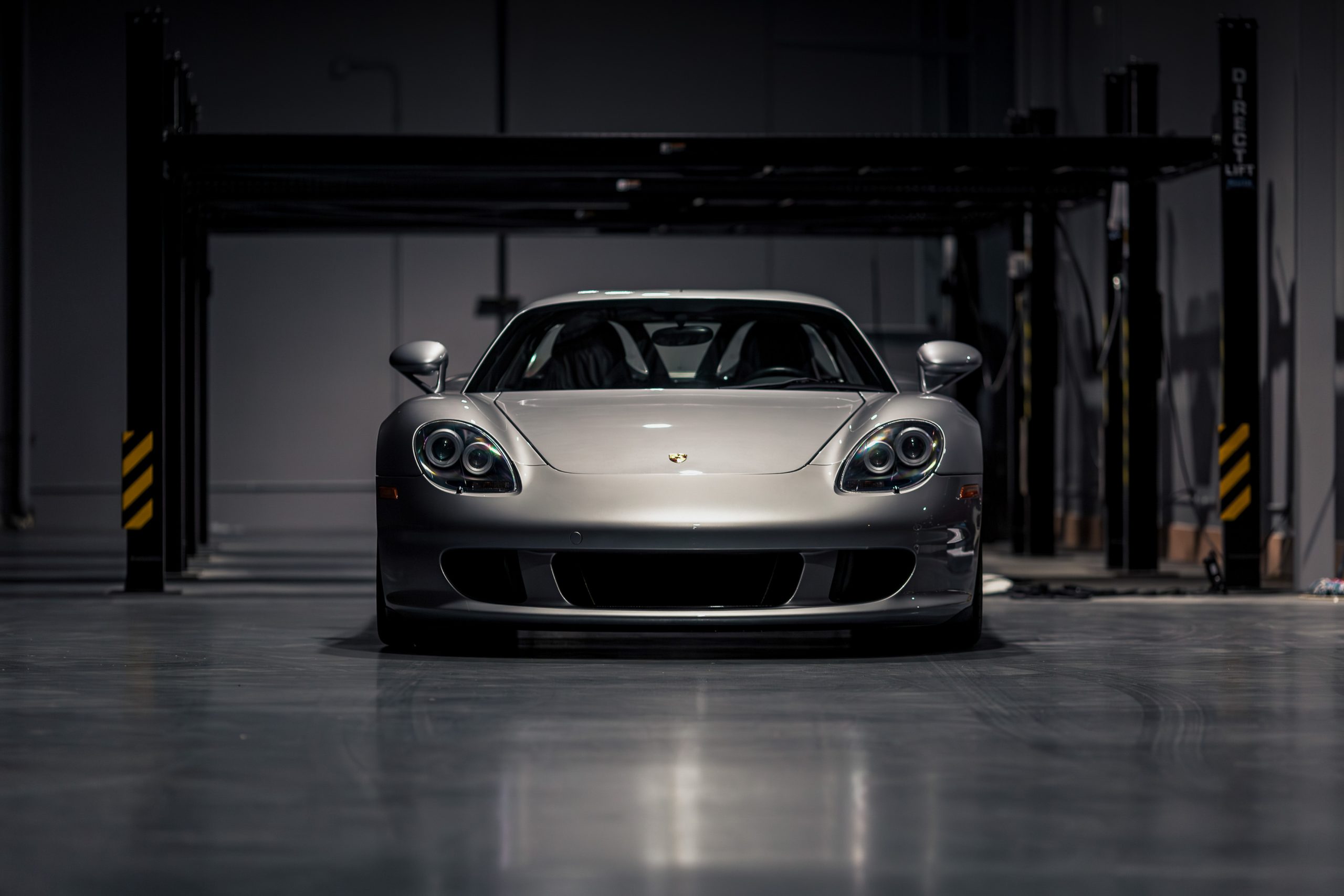Season opener in Qatar
Porsche Penske Motorsport has completed the preparatory test drives, the so-called prologue. The season opener in the FIA World Endurance Championship (WEC) is just around the corner. The 10-hour ‘Qatar 1812 km race starts this Friday (28 February) in Doha. Porsche returns to the Lusail International Circuit with fond memories: three Porsche 963 made it onto the podium at the race’s debut in early 2024. The key to their success back then was the optimal use of the standardized Michelin tires.
Starting at the bottom
The basis for last year’s one-two-three triumph was a difficult test on 29 and 30 November 2023. In preparation for the start of the 2024 season, Porsche Penske Motorsport had completed extensive test drives on the 5.418-kilometer Grand Prix circuit near the Qatari capital Doha. “Back then, we left there and had more worries than before,” recalls Romain Gineste, Head of Track Engineering LMDh in the Porsche Motorsport factory team’s WEC program: “We had nothing but graining on both days, the tire surfaces were badly damaged in places. I was sitting on the plane on the way back and thought that it was probably the most pointless test ever. But then we put our heads together and looked for a solution.”
The graining occurs when race cars overload their tires – parts of the tread clump together, creating fine waves in the rolling direction. They reduce the contact area and influence the tire’s surface temperature. Deep grooves kept forming during the test drives on the Lusail circuit, which is known for its very high grip level. “Once the graining has started, you can hardly get rid of it and the affected set of tires is ruined. Of course, you don’t win that way,” says Gineste. “As a result, you have no chance of completing your desired program during tests and practice sessions. And in the race, the stint would be virtually over and fast and consistent lap times would not be possible.”
Modified suspension kinematics
In the following two and a half months at the beginning of 2024, however, the experts at the Weissach and Mannheim sites found the key to the problem: a modified setup of the suspension kinematics and a careful running-in of new sets of tires prevented graining on the GP circuit in Qatar in the long term.
“With this knowledge, we were a step ahead of everyone else right from the start, because our competitors only gained their experience with graining directly before the race weekend,” explains the experienced engineer from France. The trick: Porsche Penske Motorsport and the customer teams had used the practice sessions of the prologue to carefully scrub all sets of tires for the upcoming season opener. “Regardless of the track temperature, this allowed for consistently fast laps during the race and also increased the durability of the tires in particular,” smiles Gineste about the clever handling of the Michelin tires: “Theoretically, we could even have driven three stints with one set. Jota actually did that back then.”
Changed regulations
This advantage from the previous season has now evaporated. “On one hand, the competitors now have much more experience from last year’s race. In addition, many teams were testing in Doha in December and January and are therefore much better prepared. On the other hand, during the prologue, the tires can no longer be scrubbed for the race,” reports the engineer. In 2024, the teams could already dispose of the tire quota for the race weekend during the joint test drives before the start of the season. The regulations have changed for this year: They can only access the tires intended for the upcoming season opener from Qualifying onwards.
The new start time also means that Qatar’s season opener will be different from last year. In 2024, the 10-hour race began at 11:00 a.m. local time, and now the competition starts at 2:00 p.m. The competitors will therefore race until midnight. “This has a significant impact,” reports Gineste. “Last year, the ambient and asphalt temperatures rose for two hours after the start before dropping by around 15 degrees Celsius by the end of the race. This year, we have already passed the peak of the temperatures at the start and will be racing in the dark for much longer. In other words, we are expecting more constant conditions.”
Changing temps and humidity
The falling temperatures can cause surprises at any time, especially in the first five hours of the race up to 19:00, as the front and rear tires react differently to certain phases of the temperature drop. This has an effect on the vehicle balance. During the same period, there is also the typical increase in humidity in Qatar, which changes the density of the air and thus reduces the aerodynamic downforce of the race cars. “As we cannot react to these things during the race with setup adjustments, it is up to the driver to adapt to the changed conditions and maximize performance, even if there is a possibility of increased understeer,” reports Gineste. When setting up the car, the engineers already have these developments in mind: “They have to anticipate the track conditions in the final hours of the race and set up the Porsche 963 so that it is particularly competitive in the final stints when the decisions on victory and positions are made – without making too many compromises in the first phase of the race.”
Above content © 2025 Dr. Ing. h.c. F. Porsche AG reviewed and edited by Rex McAfee


